Once I’ve finished painting my leather-hard jugbirds with coloured slips I leave them to dry. The final step before the bisque firing is to coat unpainted areas, usually the foot, with terra sigillata. It makes a fine, smooth surface.. think Roman Samian ware.. and I like the look as a contrast to the super shiny glaze finish of the rest of the pot.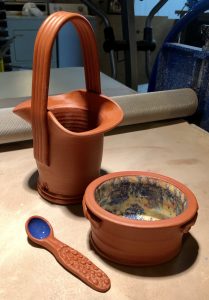
Realizing I was almost out of my supply of terra sig, there seemed no better time than now to mix up some more, and to document the process. As I weighed out the Redart Clay powder and added water and dissolved Calgon I was once again grateful to the late Gail Carney, ECIAD ceramics technician, for this so-easy low-tech method. You can’t buy ready-made terra sig, as far as I know, so sharing this technique might be useful.
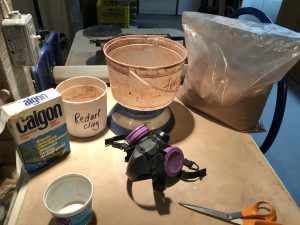
Redart Terra Sigillata
Redart Clay powder 2 kg
Water 8kg
Calgon water softener 3gm
Dissolve calgon in a little warm water, mix with the clay and water, sieve and leave for an hour. Then pour into another bucket every twenty minutes, discarding the bottom sludge, until there is almost no residue. The next day is too late to continue. The watery result can be left to evaporate or put in a large pot on the stove to bubble away the excess water. Stir and apply with a brush to bone-dry ware in several thin layers. Pots can be dipped in terra sig or sprayed. If it is too thick, like a slip, it may spall off.
In these photos you’ll see me adding the Calgon/warm water mixture to the clay and water, and that I seived said mixture and LEFT IT FOR AN HOUR.
At that point I carefully poured it all into another bucket and you’ll see the sludge left in the bottom of the first one. I dumped the goop into the back of the yard.. don’t put it down the sink!
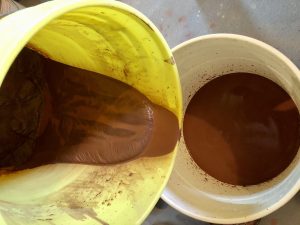
Thereafter I decanted the liquid from one bucket to the other about twelve times, twenty minutes or more apart. Each time there was a deposit of larger particles but nowhere near the amount of that first pour. At the end of the day I left it. Two days later you can see that I have a large bucket of super fine terra sigillata. Sometimes I have boiled away excess water when I’m in a hurry but this batch seems to be about right and I can leave it uncovered for a few more days.
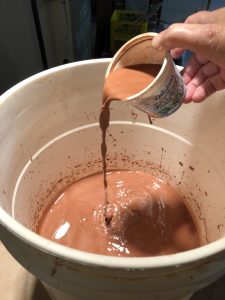
I’ve found that most clay powders can be used to make terra sigillata. Here is a recipe for a white one:
Goldart Terra Sigillata
Goldart Clay powder 500gm
Water 1 kg
Calgon 3gm
Good off-white and a basis for other colours, usually stains.
I have used red and white terra sig with stains added, on parts of stoneware pots in soda firings. It gives a good contrasting GLAZE finish next to the usual sprayed slips on my jugbirds.
The first photo is of some more recent pieces on which I’ve used terra sig. The basket is my version of a Verwood, Dorset historical one.
The signature piece for my 2003 show ‘Ornithikos’, at the Gallery of BC Ceramics, was this Rooster. Most of his surface is terra sigillata.
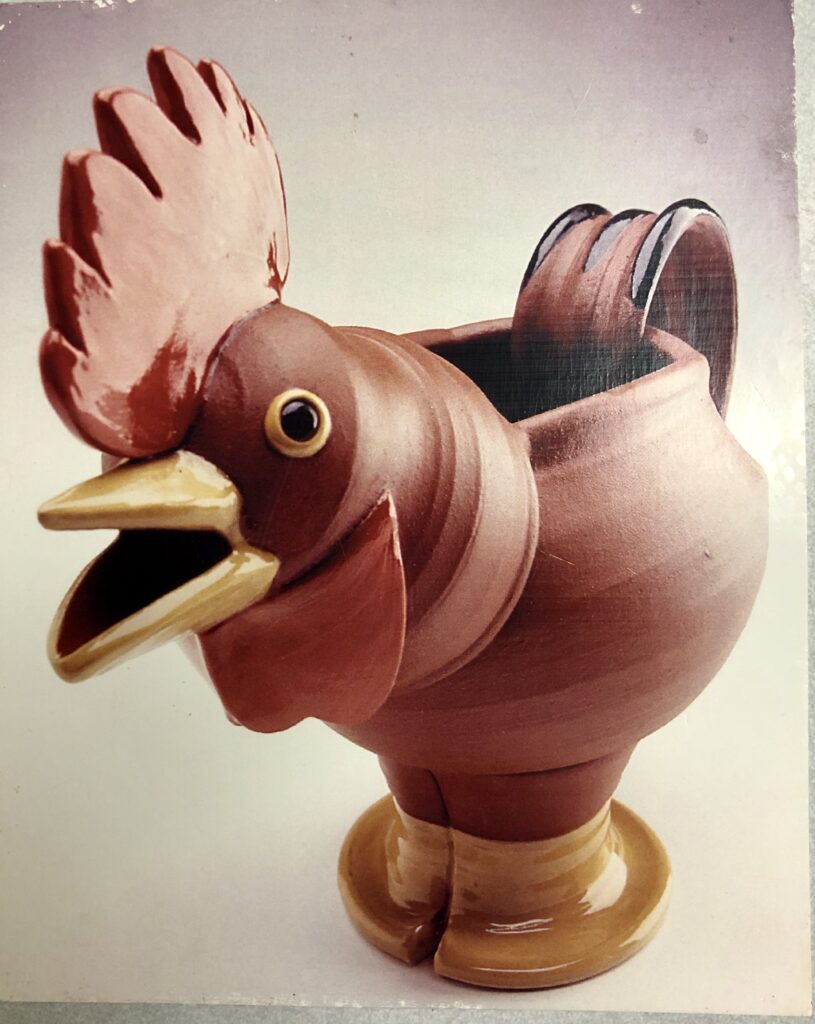
photo by Ken Mayer
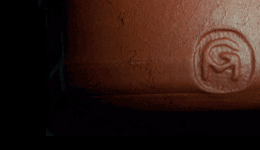
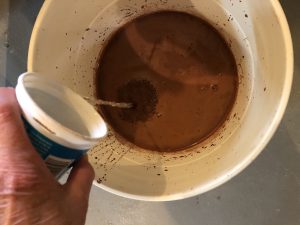
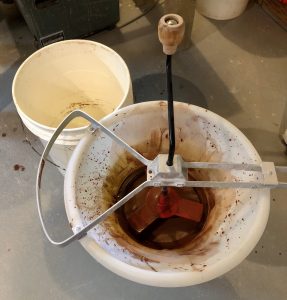
I use terra sig (from Neumann red) at cone 10. It requires a reduction period followed by reoxidation. l had it all worked out -light reduction at 06 for 35 minutes, then oxidation to cone 10. Had to get an oxyprobe installed to figure it out.Now it doesn’t seem to work anymore . Now the terra sig becomes very dark. What have you learned from your salt firing? There is usual reduction involved.When ? How long?
Any words of wisdom regarding this would be much appreciated, Gillian. Thanks, Judy
Sorry it’s taken too long to reply, Judy. Sadly I can’t offer suggestions to help with the finish of terra sigillata at cone 10. I have simply used it experimentally, painted on parts of my stoneware jugbirds (the beak/bil for instance) and find that in salt or soda it behaves differently from the sprayed slips elsewhere on the form. It winds up as a glaze rather than the orange peel effect. I like it but it certainly doesn’t resemble the expected terra sig finish. We can chat further by phone or email..
Hi Judy and Gillian and anyone else who might be following. I’ve used terra sig in my soda kiln for many years and have always found it to be reliable and pleasing, giving soft oranges subject to flashing to lighter colours where the soda hits. Not usually good in reduction, but I don’t do much of that. I took some photos of pots just from the kiln but don’t see a way to include them here. Let me know if you want me to send to your email.
All best, pot on!
Nice to hear from you Connie. We’d love to see your recent soft orange on recent pots. If you were to send them to me at gillianmcmillanpotter@gmail.com I could include them with this blog.